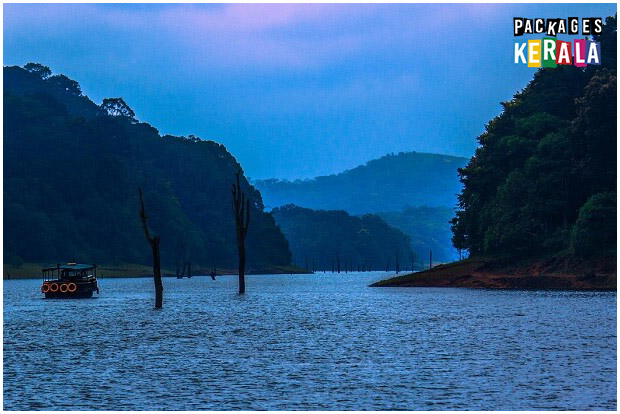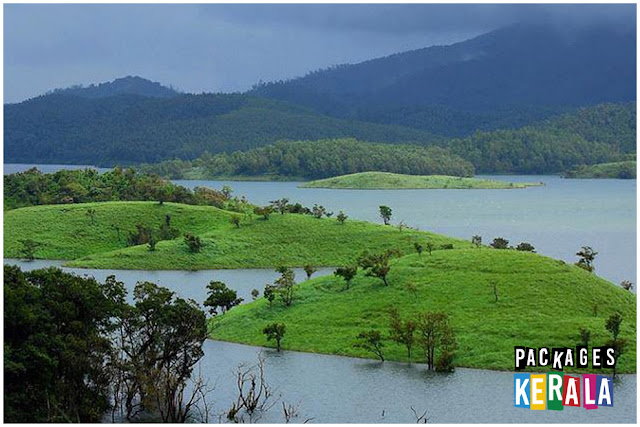A thirapally Waterfalls are located 1000 feet above sea level at the Chalakudy River in Thrissur district of Kerala . One of the famous tourist attractions in Kerala , the magnificent waterfalls are a sight worth witnessing. This is the biggest waterfall in Kerala. Athirapally falls comes down from a height of 80 feet through several parallel streams. In the monsoon season, in its full might, the waterfalls appear like Niagara Falls. One can reach the top of Athirapally falls in about 15 minutes’ wall. It is blessed with spectacular views of the Sholayar hills and the Western Ghats. The trek down from the top of the waterfalls is about 10-15 minutes trek. Swimming is possible in the stream as you enjoy the spray of the water. Rainbows are also a common sight. It usually takes 2-3 hours to explore the waterfalls . The surrounding environs of the waterfalls is a bio diversity hotspot. The river is blessed with 85 species of fresh water fish living in it. The forest is habitat of d...
Kerala shows diversity in its climatic conditions due to the variety in its geographical features. The state experiences an equatorial tropic climate. The eastern highlands including the mountain regions predominantly have a cool climate, which is very refreshing. On the other hand, the coastal plains of western lowlands generally remain hot and humid for most part of the year. The average annual rainfall in Kerala is quite high as compared to its neighboring states. There are four types of seasons in Kerala, which include winter, summer, south-west monsoon and northeast monsoon.
Kerala receives copious rain (average 3000 mm a year )each year. The temperature in Kerala normally ranges from 28° to 32° C (82° to 90° F) on the plains but drops to about 20° C (68° F) in the highlands. The Highlands of Kerala, which is an area of major tourist attraction, enjoys a cool and invigorating climate the year-round . Owing to its diversity in geographical features, the climatic condition in Kerala is diverse. It can be divided into 4 seasons - Winter, Summer, South-West Monsoon and North-East Monsoon.
Summer Season in Kerala
Towards the end of February temperature starts climbing and this marks the beginning of summer in Kerala. Relatively higher temperature, low rainfall, and slightly humid weather are the characteristics of the summer season in Kerala. When compared to other Indian states where temperature soars to over 40°C, summers in Kerala are cool and pleasant, thanks to the Western Ghats which prevent the dry northern winds from entering the state and the Arabian sea for the cool breeze that blows towards the land providing it with a moderate temperature. Erratic rains accompanied by lightning and thunder is another feature of the season. Starting from March, summer season continues till the end of May or the beginning of June and is concluded with the outset of monsoons.
 |
| Kerala- Gods Own Country |
Kerala receives copious rain (average 3000 mm a year )each year. The temperature in Kerala normally ranges from 28° to 32° C (82° to 90° F) on the plains but drops to about 20° C (68° F) in the highlands. The Highlands of Kerala, which is an area of major tourist attraction, enjoys a cool and invigorating climate the year-round . Owing to its diversity in geographical features, the climatic condition in Kerala is diverse. It can be divided into 4 seasons - Winter, Summer, South-West Monsoon and North-East Monsoon.
Summer Season in Kerala
Towards the end of February temperature starts climbing and this marks the beginning of summer in Kerala. Relatively higher temperature, low rainfall, and slightly humid weather are the characteristics of the summer season in Kerala. When compared to other Indian states where temperature soars to over 40°C, summers in Kerala are cool and pleasant, thanks to the Western Ghats which prevent the dry northern winds from entering the state and the Arabian sea for the cool breeze that blows towards the land providing it with a moderate temperature. Erratic rains accompanied by lightning and thunder is another feature of the season. Starting from March, summer season continues till the end of May or the beginning of June and is concluded with the outset of monsoons.
 |
| Kerala Waterfalls |
The coastal region on the west of the Western Ghats has summers that are hot and humid, while the lowlands on the eastern side of the Ghats get drier summers. With humidity on one side and dry heat on the other, the only place to escape to is the hills. Thankfully, Kerala has plenty of hill stations nestled in the Western Ghats, boasting of a pleasantly cool climate throughout the year.
Coolest places in Kerala to visit during the summer
Thekkady:
The very sound of the word Thekkady conjures up images of elephants, unending chains of hills and spice scented plantations. In the Periyar forest of Thekkady is one of the finest wildlife reserves in India and spread across the entire district are picturesque plantations and hill towns that hold great opportunities for treks and mountain walks.
 |
| Thekkady Boating |
Munnar:
Munnar rises as three mountain streams merge - Mudrapuzha, Nallathanni, and Kundala. 1,600 m above sea level, this hill station was once the summer resort of the erstwhile British Government in South India. Sprawling tea plantations, picturesque towns, winding lanes and holiday facilities make this a popular resort town. Among the exotic flora found in the forests and grasslands here is the Neelakurinji. This flower which bathes the hills in blue once in every twelve years, will bloom next in 2018. visit
 |
| Munnar Hills and Plantations |
Wayanad:
Wayanad is a hill district in Kerala. Wayanad has a pleasant weather throughout the year and is one of the popular Kerala Tourism destinations. Banasura Sagar Dam, Edakkal Caves, and Soochipara Waterfalls are among the must include places in your Wayanad visit. Wayanad is also one of the top Kerala tourist places to visit. The name Wayanad is derived from Vayal Nadu which means the land of paddy fields. It is a picturesque plateau situated at an altitude ranging between 700 to 2100 meters nested among the mountains of the Western Ghats on the borders of Tamil Nadu and Karnataka States. The culture of Wayanad is mainly tribal oriented.
 |
| Wayanad Dam |
Nelliyampathy:
From the town of Nenmara in Palakkad district, the cloud-caressed peaks of the majestic Nelliyampathy Hill ranges are a sight to behold. The height of the hills ranges from approximately 467 m to 1572 m and it has an extremely calming effect on all who view it. To reach Nelliyampathy, one has to take the road starting from Nenmara that proceeds to the Pothundy Dam. There are about 10 hairpin bends that have to be negotiated on the way to Nelliyampathy. The Pothundy Dam is a beautiful locale with facilities for boating and is a nice option as a picnic place.
 |
| Nelliyampathy View |
Vagamon:
Vagamon hill station in Idukki is among the few spots on the planet that need to be experienced first-hand to truly discover its glory. The grassy hills, velvet lawns and overall mysticism of the place cannot be replicated anywhere else in the world. This quaint town lies untouched by any modern influences and is neatly tucked away in Idukki district. Visitors can avail many activities including trekking, paragliding, mountaineering and rock climbing.
 |
| Paragliding in Vagamon |
Comments
Post a Comment